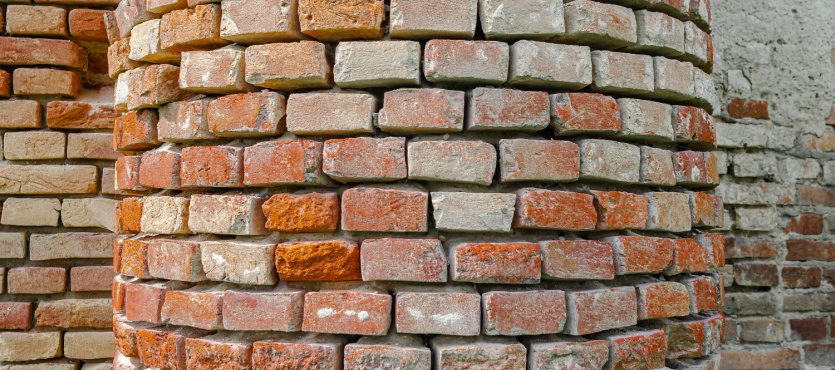Weather can have a significant impact on masonry structures, and tuckpointing is a crucial maintenance task to address the effects of changing seasons. Tuckpointing involves repairing and replacing deteriorated mortar joints in brick or stone masonry and more. It is an essential maintenance task for masonry structures in Toronto, which experiences a wide range of weather conditions throughout the year, including cold winters and hot summers.
Freeze-Thaw Cycle
One of the most significant threats to masonry is the freeze-thaw cycle. In cold climates, this opens the door for water to run into small cracks and pores in the mortar. As we know, when water freezes, it expands, causing the mortar to crack and deteriorate. During the thawing process, the water contracts, further weakening the mortar. This cycle can repeat multiple times during the winter, leading to extensive damage over time.
Other Factors Affecting Masonry Structures
- Moisture and Rain: Rain and moisture can penetrate damaged mortar joints. This not only weakens the structure but can also lead to the growth of mold, mildew, and efflorescence (white, powdery deposits on the masonry surface). Moisture can also cause mortar erosion and lead to a crumbling facade.
- Heat and Sun: Extreme heat and prolonged exposure to the sun can cause mortar to dry out and become brittle over time. This can result in mortar joints cracking and losing their bond with the surrounding masonry. Tuckpointing can not only address these issues but also fix them to avoid permanent damage to the structure.
- Wind: Strong winds can carry abrasive particles like sand and dirt, which can erode the surface of the mortar and masonry units. Over time, this can lead to a loss of structural integrity and aesthetic appeal. Although we cannot control the wind, we can safeguard our structures with tuckpointing.
Why Tuckpointing?
Given Toronto’s variable weather, it’s essential to use moisture-resistant mortar materials during tuckpointing. Water penetration into mortar joints can lead to structural issues, efflorescence, and mold growth. Properly repointed joints will help keep moisture out and provide strength over years to come. If you’d like to learn more about the repointing process, an expert from Turnbull Masonry would be more than happy to assist you.
Additionally, choosing the right mortar mix is crucial. It should closely match the composition and appearance of the original mortar to maintain the aesthetic integrity of the masonry. A professional mason with experience in Toronto’s climate can guide you in selecting the appropriate mortar mix.
Before starting any tuckpointing work, it’s recommended to have a professional mason inspect your masonry structures. They can assess the condition of the mortar joints and bricks or stones and provide recommendations for repairs. Spring and fall are generally the best seasons for this work when the weather is milder.
Toronto has many historic buildings with unique masonry. If you own a heritage property, it’s essential to choose a professional mason experienced in heritage preservation techniques to ensure the restoration work maintains the historical character of the structure. Depending on the nature of the tuckpointing work, you may need to obtain permits from the City of Toronto. However, that will not be your headache if you work with Turnbull Masonry.
Top Masonry Contractor in Toronto
Masonry projects, including repair and historic restorations, require a competent team of mason who are well-versed in their profession. Turnbull Masonry is one such team of masons who are dedicated to providing the best masonry services to residents of Toronto, Canada. Whether your home’s brick exterior is damaged or your chimney has leakage problems, we are here to help you. Speak with one of our experts today to learn more about our services or if you need assistance with booking an appointment.

